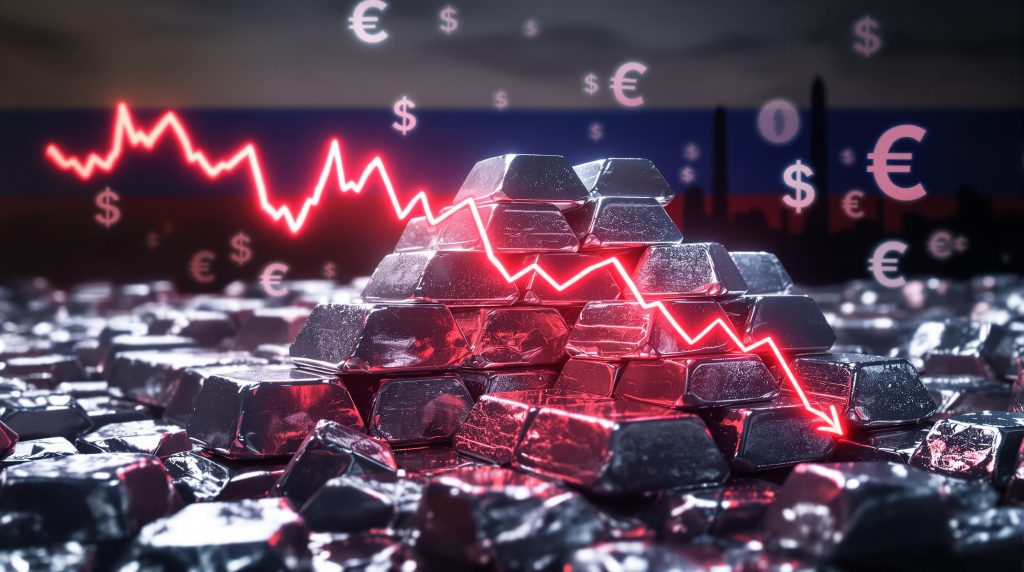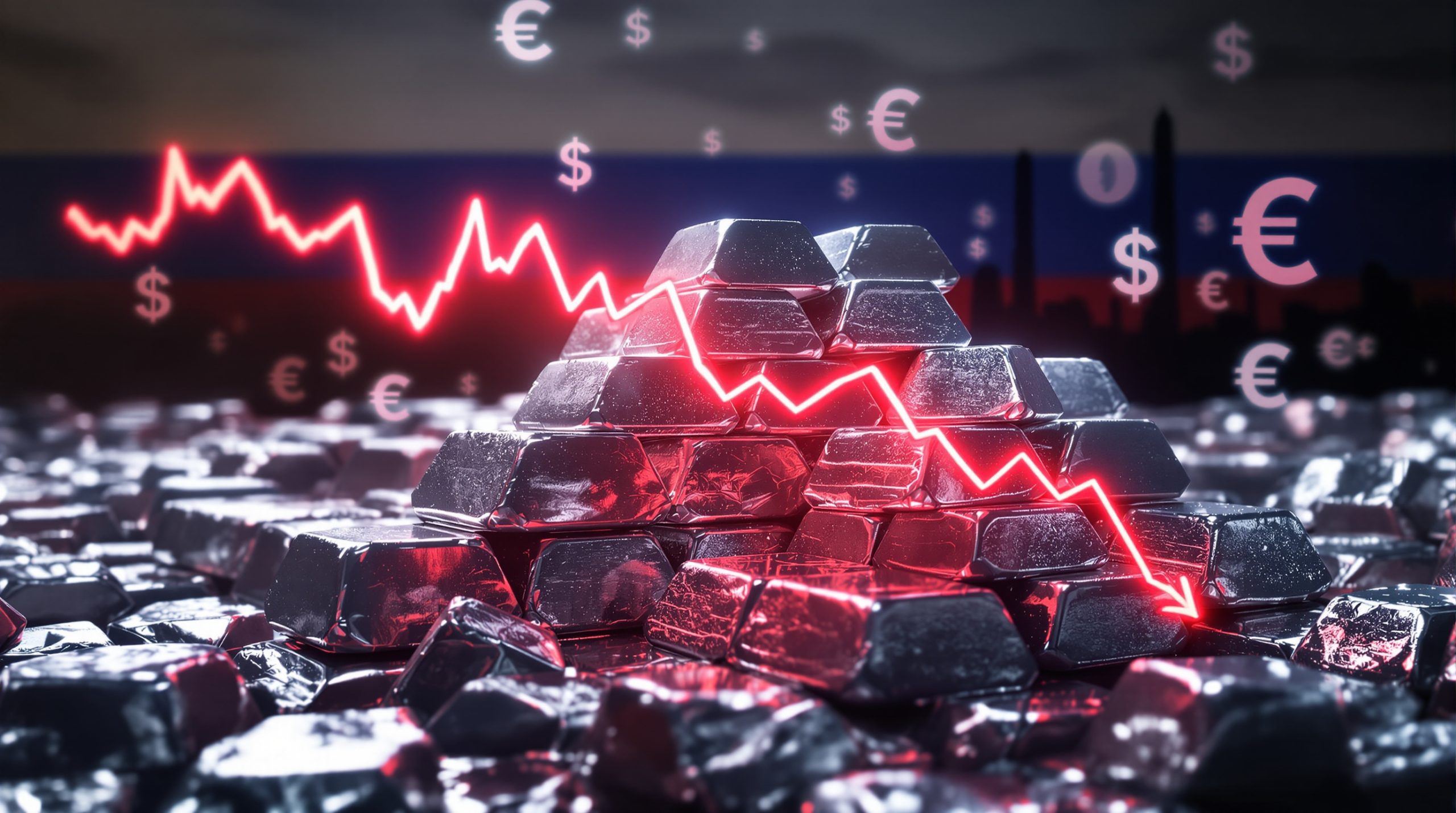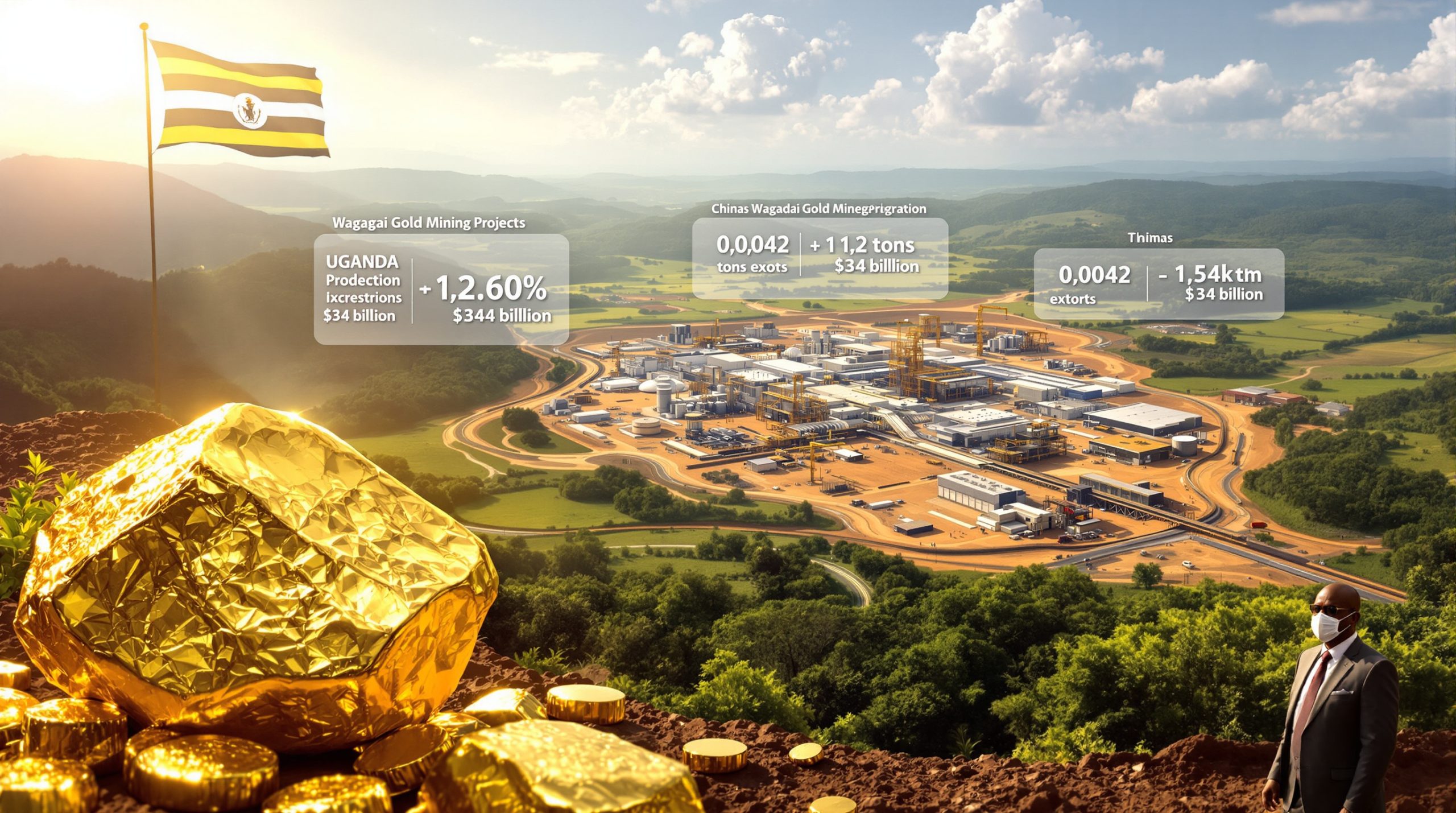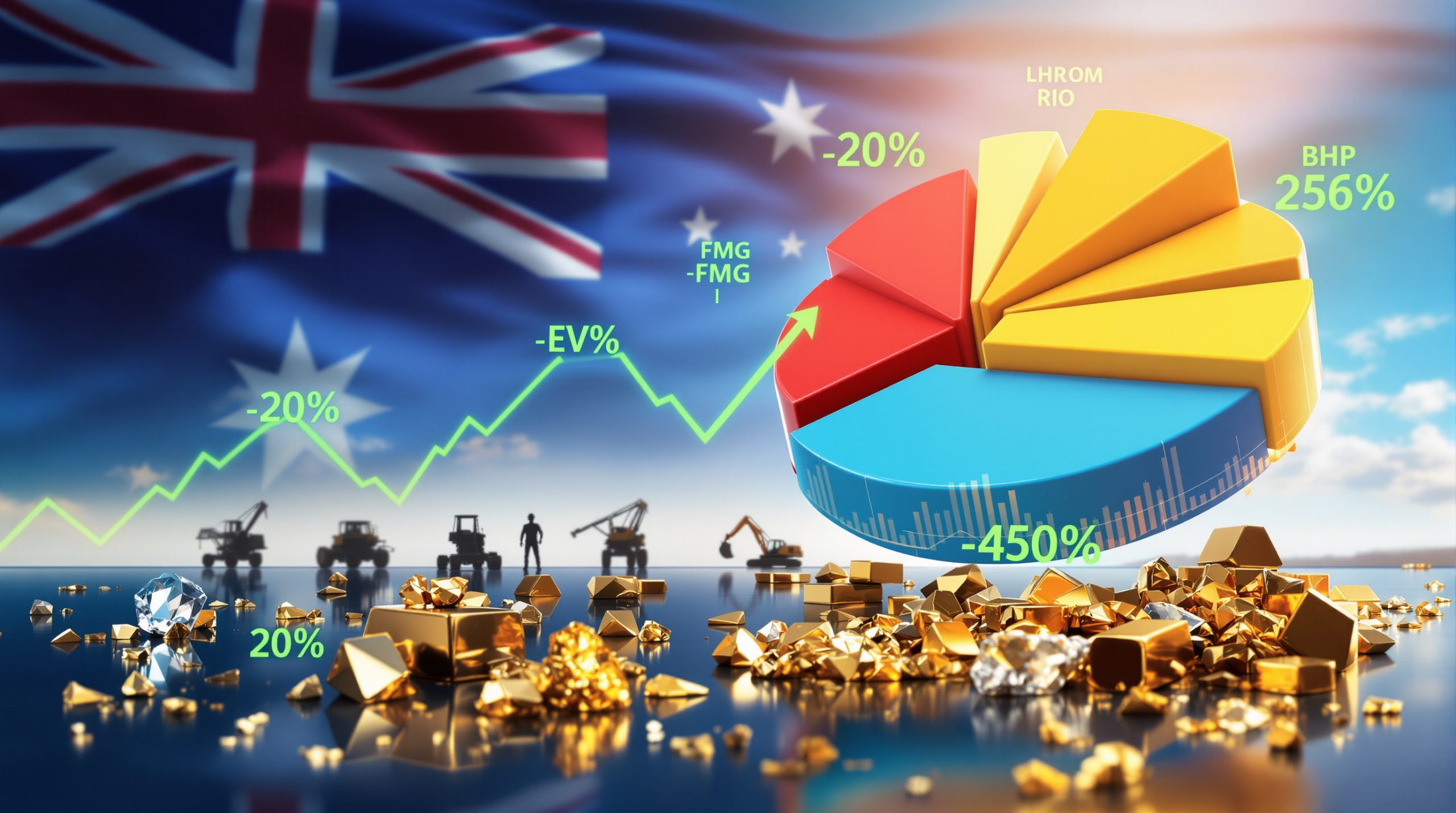Rusal's Financial Challenges: Analyzing the Aluminum Giant's First-Half Loss
Aluminum industry powerhouse Rusal reported a shocking reversal of fortunes in the first half of 2025, raising concerns among investors and market analysts about the company's financial health and the broader implications for global aluminum markets. This analysis explores the factors behind this dramatic shift, contextualizes it within industry evolution trends, and examines potential paths forward.
Understanding Rusal's Financial Reversal
The world's largest aluminum producer outside China has stunned market watchers with a dramatic financial downturn. Rusal swung to first-half loss as expenses surge, shifting from a healthy $565 million profit during the first half of 2024 to an $87 million net loss for the six-month period ending June 30, 2025. This represents a staggering $652 million negative swing in just one year.
Financial analysts point to this reversal as particularly concerning given the company's previously strong position in the global market. The sudden shift raises questions about both company-specific challenges and broader industry headwinds affecting major aluminum producers worldwide.
Key Financial Metrics Behind the Loss
Several critical financial factors contributed to Rusal's unexpected loss:
- Finance expenses: Surged by $408 million, primarily from increased interest payments on bank loans, corporate bonds, and other financial instruments
- Foreign exchange impact: Added $181 million in losses as currency volatility affected the company's global operations
- Cost of sales: Jumped approximately 40% to $6.11 billion, significantly outpacing revenue growth
- Revenue: Rose 32% to $7.52 billion, which proved insufficient to offset the dramatic rise in expenses
The combination of these factors created a perfect storm for Rusal's bottom line. While revenue growth would typically signal strength, the disproportionate increase in costs overwhelmed any positive impact from higher sales volumes.
How the Ukraine Conflict Has Affected Rusal's Operations
Western Sanctions' Indirect Impact
While Rusal has not been directly targeted by international sanctions, the company has navigated a challenging business environment for more than three years following Russia's military actions in Ukraine. This geopolitical situation has created significant operational hurdles and market constraints.
The aluminum giant has faced increased scrutiny from international financial institutions, complicating its ability to secure favorable financing terms. This heightened risk assessment has likely contributed to the substantial increase in finance expenses reported in the first-half results.
Buyer Behavior Changes
Perhaps most damaging to Rusal's business model has been the reluctance of Western buyers to engage in new contracts for Russian metal. This hesitancy reflects concerns about potential future sanctions, public relations considerations, and supply chain challenges.
Industry observers note that long-standing customers have been cautious about extending existing relationships, while new business development in Western markets has become exceedingly difficult. This market access restriction has forced Rusal to potentially seek alternative buyers in regions with different geopolitical alignments.
"While not directly sanctioned, the company has seen some Western buyers avoid new contracts for Russian metal," noted a Reuters report from August 2025.
The combination of these factors has resulted in significant tariff-induced market disruption, requiring operational adjustments and potential market reorientation that may take years to fully implement.
What Factors Drove Rusal's Rising Expenses?
Production Cost Increases
The 40% jump in cost of sales to $6.11 billion stems from multiple factors affecting the aluminum production chain. This substantial increase outpaced revenue growth by a significant margin, creating an unsustainable cost structure.
Raw Material Price Inflation
Raw material costs represent a substantial portion of aluminum production expenses:
- Alumina costs: This critical input for aluminum smelting saw significant price increases driven by global supply constraints and energy cost inflation
- Carbon anodes: Essential components in the smelting process faced price pressures from both raw material costs and manufacturing expenses
- Alloying elements: Materials such as silicon, magnesium, and copper used in specialized aluminum products experienced price volatility
- Chemical reagents: Various chemicals used throughout the production process saw inflationary pressures
Energy and Logistics Challenges
Aluminum production is notoriously energy-intensive, making producers particularly vulnerable to power cost fluctuations:
- Electricity costs: Notable increases in power expenses severely impacted production economics, as electricity typically represents 30-40% of aluminum smelting costs
- Transportation expenses: Elevated costs for moving both raw materials and finished products, exacerbated by global logistics disruptions
- Warehousing costs: Increased expenses for storing inventory in multiple global locations as traditional distribution channels faced disruption
Sales Volume Impact
Rusal experienced increased volumes of primary aluminum sales, which contributed to higher overall costs despite also boosting revenue. This volume growth required proportionally more raw materials, energy, and transportation services, all of which faced inflationary pressures.
How Did Rusal's Revenue Perform Despite the Loss?
Revenue Growth Amid Challenges
Despite reporting a net loss, Rusal achieved a 32% increase in revenue, reaching $7.52 billion for the first half of 2025. This seemingly contradictory performance highlights the complex dynamics affecting the company.
The revenue growth indicates that demand for aluminum products remained strong, with buyers continuing to require substantial volumes despite geopolitical complications. This underlying demand strength provides a potential foundation for recovery if cost pressures can be addressed.
Sales Composition Analysis
Rusal's revenue growth came from multiple product categories:
- Primary aluminum: Higher sales volumes drove significant revenue growth as industrial demand remained resilient
- Value-added products: Premium alloys and specialized products contributed to improved revenue figures
- Semi-finished goods: Increased sales of products like billets, slabs, and wire rods supported the top-line performance
Industry analysts note that while sales volumes increased, there may have been pricing concessions to secure business in the current geopolitical environment, limiting the profit potential from these higher volumes.
Margin Compression Factors
The revenue growth, while impressive in absolute terms, was insufficient to offset the more dramatic rise in expenses. This resulted in severe margin compression across the product portfolio:
- Input cost inflation: Raw materials and energy costs rose faster than aluminum prices
- Financing burden: Higher interest expenses directly impacted profit margins
- Currency effects: Unfavorable exchange rate movements compressed margins in certain markets
- Market access costs: Potential discounting to secure sales in a challenging business environment
What Financial Challenges Impacted Rusal's Bottom Line?
Interest Expense Burden
A major factor in Rusal's financial downturn was the substantial increase in finance expenses, which rose by $408 million compared to the previous year. This dramatic increase reflects both higher interest rates globally and potential risk premiums applied to the company's debt.
Debt Servicing Costs
The company's debt structure faced multiple pressures:
- Bank loans: Higher interest rates on existing variable-rate debt as global central banks continued tightening monetary policy
- Corporate bonds: Increased financing costs as investors demanded higher yields for perceived risk
- Trade finance: More expensive short-term financing for working capital needs
- Other financial charges: Additional expenses related to debt management, including potential early repayment penalties or restructuring fees
Currency Exchange Volatility
The company reported a $181 million loss due to foreign exchange fluctuations. This significant impact highlights the challenges of operating across multiple currency environments during a period of global economic uncertainty.
Aluminum is typically priced in US dollars, while many of Rusal's production costs are denominated in local currencies. This creates a natural exposure to currency fluctuations that can significantly impact profitability, especially during periods of heightened volatility in foreign exchange markets.
How Does Rusal's Situation Reflect Broader Aluminum Market Trends?
Global Aluminum Industry Context
Rusal's financial challenges occur against a backdrop of significant shifts in the global aluminum market. The aluminum industry has faced substantial headwinds in recent years:
Production Cost Inflation
The entire aluminum sector has grappled with rising production costs:
- Energy prices: Aluminum smelting requires approximately 13-15 MWh of electricity per ton of aluminum produced, making producers extremely vulnerable to power price increases
- Carbon pricing: Increasing costs associated with emissions in many jurisdictions have added to production expenses
- Raw material costs: Global supply chain disruptions have affected input costs industry-wide
- Labor costs: Inflationary pressures on wages have impacted production economics
Market Access Restrictions
Geopolitical factors have reshaped traditional aluminum trade flows:
- Trade barriers: Global metal tariffs and other trade restrictions have complicated global aluminum markets
- Regional market dynamics: Shifting patterns of aluminum consumption and production globally
- Environmental regulations: Increasing scrutiny of carbon-intensive industries has created additional compliance costs
- Supply chain resilience: Buyers increasingly prioritizing supply security over lowest-cost sourcing
What Are the Implications for Global Aluminum Supply Chains?
Supply Chain Resilience
Rusal's challenges highlight potential vulnerabilities in global aluminum supply chains, particularly as the industry navigates geopolitical tensions and economic uncertainties.
Aluminum is a critical input for numerous industries, including:
- Automotive manufacturing
- Aerospace
- Construction
- Packaging
- Electronics
- Renewable energy infrastructure
Disruptions at major producers like Rusal can have ripple effects throughout these sectors, potentially affecting production schedules, pricing, and material availability.
Market Rebalancing Possibilities
The global aluminum market may see significant structural changes in response to these challenges:
- Production shifts: Potential for increased aluminum production from alternative sources in regions with more stable political environments and secure energy supplies
- Pricing dynamics: Possible impacts on global aluminum pricing if major producers face sustained challenges, with potential premiums for non-Russian material
- Investment patterns: Acceleration of capital investment in new smelting capacity in regions perceived as lower risk
- Vertical integration: Increased focus on securing raw material supplies through ownership or long-term contracts to manage cost volatility
How Might Rusal Address Its Financial Challenges?
Potential Strategic Responses
To address its financial situation, Rusal might consider several strategic options:
Cost Optimization Initiatives
- Operational efficiency: Streamlining production processes and implementing advanced automation and analytics
- Energy management: Exploring lower-cost energy sources, improving energy efficiency, or negotiating more favorable power contracts
- Raw material sourcing: Revising procurement strategies to reduce costs and increase supply security
- Working capital optimization: Improving inventory management and payment terms to reduce financing needs
Market Diversification
- New customer markets: Expanding presence in regions less affected by geopolitical tensions, potentially focusing on Asian and Middle Eastern markets
- Product mix adjustment: Potentially shifting toward higher-margin aluminum products with specialized applications and less price sensitivity
- Value chain integration: Exploring opportunities to move downstream into more specialized products with higher margins
- Joint ventures: Partnering with regional players to access new markets through local relationships
Financial Restructuring
- Debt refinancing: Seeking more favorable terms on existing debt, potentially by securing financing from non-Western sources
- Capital structure review: Evaluating options to strengthen the balance sheet, including potential asset sales or equity issuance
- Currency hedging: Implementing more robust currency risk management strategies to mitigate future foreign exchange impacts
- Cash conservation: Reviewing capital expenditure plans and potentially deferring non-essential projects to focus on capital raising strategies
FAQ: Understanding Rusal's Financial Situation
What is Rusal's position in the global aluminum market?
Rusal remains the world's largest aluminum producer outside of China, maintaining significant production capacity despite recent financial challenges. The company operates smelters with approximately 3.8 million tonnes of annual production capacity across its global operations.
How have geopolitical tensions affected Rusal specifically?
While not directly sanctioned, Rusal has experienced market access restrictions as some Western buyers have avoided new contracts for Russian metal following the Ukraine conflict. This has necessitated a realignment of customer relationships and potentially affected pricing power in certain markets.
What drove the company's revenue growth despite reporting a loss?
Increased sales volumes of primary aluminum and alloys boosted revenue by 32% to $7.52 billion, though this was offset by even larger increases in production costs and financial expenses. The volume growth demonstrates continued demand for aluminum products despite the challenging business environment.
What were the main factors behind Rusal's cost increases?
The 40% jump in cost of sales stemmed from higher alumina and raw material prices, increased electricity costs, elevated transportation expenses, and greater sales volumes requiring more inputs. These factors combined to create a cost structure that outpaced revenue growth by a significant margin.
How significant was the currency exchange impact on Rusal's results?
Foreign exchange fluctuations contributed $181 million in losses, representing a substantial portion of the company's overall financial downturn. This highlights the challenges of operating a global business with multiple currency exposures during periods of heightened market volatility, according to Alcircle analysis.
Disclaimer: This analysis contains forward-looking statements and market projections based on currently available information. Actual results may vary substantially based on future developments in the aluminum industry, geopolitical factors, and company-specific actions. Readers should consult financial advisors before making investment decisions based on this information.
Ready to Spot the Next Major Mineral Discovery?
Discovery Alert's proprietary Discovery IQ model instantly notifies investors about significant ASX mineral discoveries, turning complex mining data into actionable investment opportunities before the broader market reacts. Explore historic examples of exceptional discovery returns by visiting our dedicated discoveries page and begin your 30-day free trial today.




